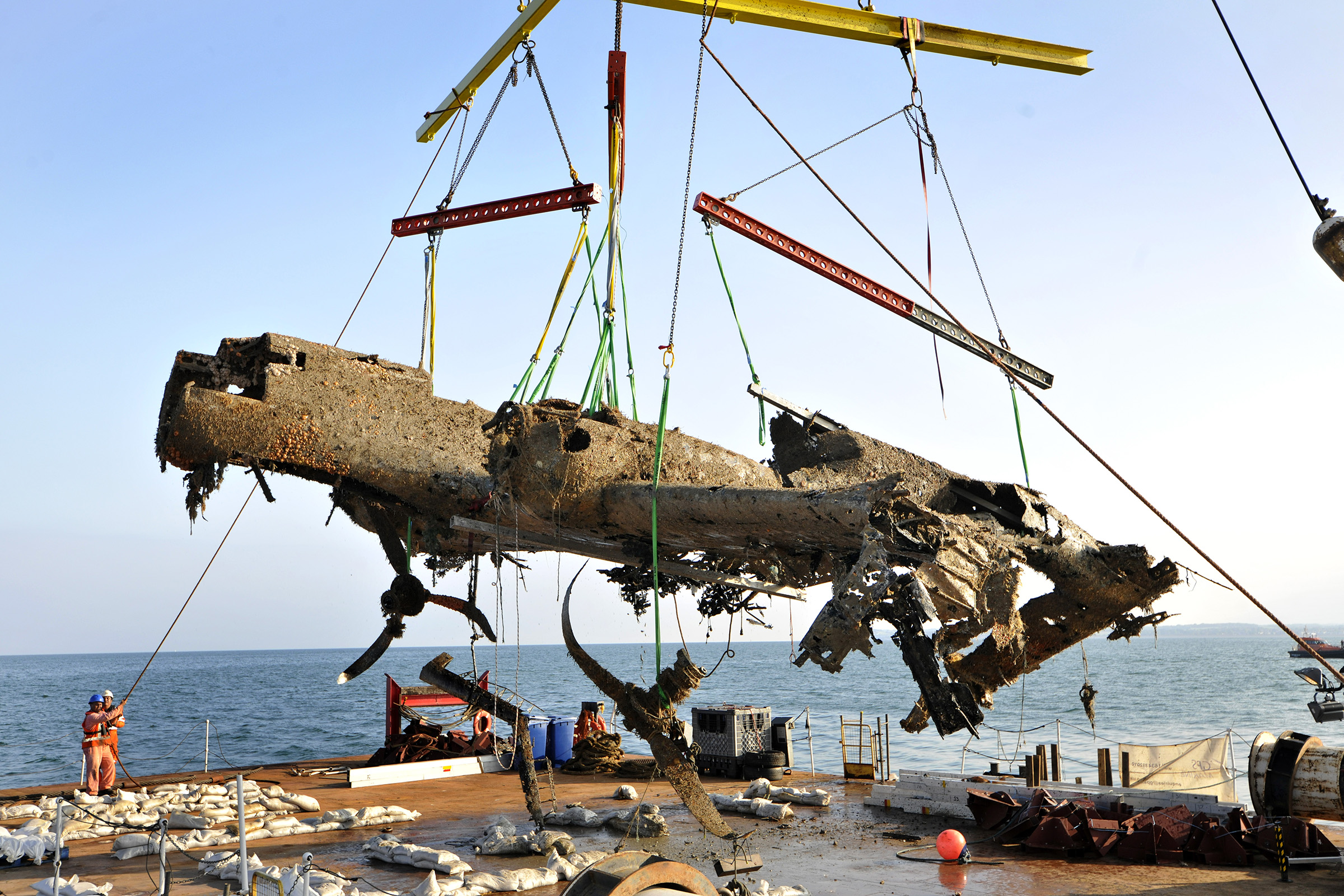On August 26, 1940, German Dornier Do-17Zs of Kampfgeschwader 3 on a mission to bomb British airfields at Hornchurch and Debden were attacked by Boulton-Paul Defiants of No. 264 Squadron, Royal Air Force. Escorting Messerschmitt Me-109Es came to their aid, but one bomber from the wing’s 7th Squadron was hit in both engines. Its pilot, Sergeant Willi Effmert, veered out over the Kentish coast, apparently in hopes of either reaching France or being picked up by German rescue craft. The bomber had only gone three miles out, however, when it was forced to ditch. Effmert and Hermann Ritzel were taken prisoner; the other crewmen, radioman Helmut Reinhardt and bombardier Heinz Kuhn, were dead. After it sank, the “Flying Pencil” vanished beneath the shifting sands while the Battle of Britain raged on.
In 2008 a survey team for the RAF Museum discovered exposed evidence of an airplane under Goodwin Sands, which was subsequently confirmed by divers and sonar scans to be the Do-17. Since then, the National Heritage Memorial Fund has raised £345,000 and engaged a salvage company, Seatech, to recover it.
Although the bomber is not in one piece, there is enough of it—including still-inflated rubber tires—to constitute the most intact example of a Do-17 in existence, provided it can be raised from the seabed 50 feet below. But this is problematic, given the corrosive effect saltwater has on aluminum, and even if the airplane is recovered, preserving it presents a challenge. The RAF Museum believes it can counter the corrosion by using a citric acid spray. If it’s raised and preserved, the Dornier will be the only artifact of its kind, and the oldest Battle of Britain veteran in existence.
On May 3, Seatech began constructing a framework of aluminum struts around the Dornier, by which it hoped to raise the extremely fragile wreck from the Channel floor. The following day the company reported its first setback, as high winds and waves delayed underwater operations. A further problem arose when divers found the plane was resting on a chalk bed rather than sand, dashing hopes of slipping the framework under it. On June 2, RAF Museum director Peter Dye announced, “We have adapted the lifting frame design to minimize the loads on the airframe during the lift while allowing the recovery to occur within the limited time remaining.” This involved fastening shackles to contact points on the Do-17 and hoisting it via a crane on a barge, after which it would be brought to Ramsgate Harbour, then to the conservation center at Cosford, Shropshire. During an initial attempt, however, high winds caused the framework to fly around so dangerously that the barge was sent back to port. The wind frustrated efforts the next day as well, but Ian Thirsk of the RAF Museum stated that the ongoing effort had gone “too far to give up at this stage,” and insisted, “We will get this project sorted out.”
Post-press update: In early June, the Dornier Do-17 was successfully lifted from Goodwin Sands. Preservation and restoration efforts have begun.
This feature originally appeared in the September 2013 issue of Aviation History. To subscribe, click here!





